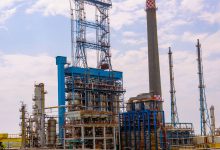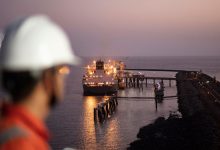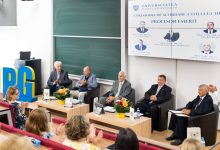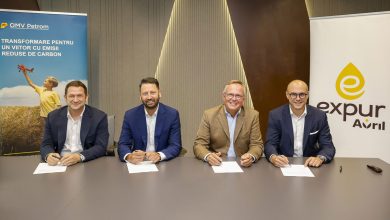Troll Phase 3 Project: Increasing Gas Exports to Supply Tight European Market
Equinor and its partners have received permission to increase gas exports from two fields on the Norwegian continental shelf to supply the tight European market. Production permits for the Oseberg and Troll fields have each been increased by 1 billion cubic meters (bcm) for the gas year starting 1 October.
Already in June, Equinor took steps to evaluate and develop concepts for enhancing the production and exports to the European market. This work resulted in enhanced production permits from the Ministry of Petroleum and Energy for the Oseberg and Troll fields.
Specifically, Equinor and its partners have received production permits for the gas year 2021 (starting 1 October) which for each is 1 bcm higher than for the current year, i.e., an increase from 5 bcm to 6 bcm for Oseberg and from 36 bcm to 37 bcm for Troll.
“The production permits allow us to produce more gas from these two important fields this fall and through the winter. We believe that this is very timely as Europe is facing an unusually tight market for natural gas. At Equinor we are working on measures to increase exports from our fields on the NCS,” says Helge Haugane, senior vice president Gas & Power.
Ramping up at Troll
After 25 years of significant gas exports from Troll, around 50% of the gas is left in the ground. To further develop the Troll-area and reinforce their ability to secure gas deliveries to Europe in the coming decades, Equinor has recently completed the Troll Phase 3 project.
Recoverable volumes from Troll Phase 3, which will produce the Troll West gas cap with industry leading low CO2 emissions, are estimated at as much as 347 billion standard cubic metres of gas. Total recoverable gas volume remaining in Troll is estimated to be 715 billion standard cubic metres.
“Now we are ramping up production at Troll following the completion of the Phase 3 project, and we expect to reach plateau production from 1 October. We take pride in being a long-term, reliable supplier of energy and we are happy that we have been able to identify ways to export as much as practically possible into this tight market,” says Helge Haugane.
Troll Phase 3, one of Equinor’s most profitable projects
On August 27, production started from the Troll phase 3 project in the North Sea. The project has a break-even price below 10 dollars and CO2 emissions of less than 0.1 kg per barrel oil equivalent. The new wells are tied in to the Troll A platform and Troll phase 3 will extend the platform’s life past 2050.
Recoverable volumes from Troll phase 3, which will produce the Troll West gas cap, are estimated at as much as 347 billion cubic metres of gas. Converted into oil equivalent this amounts to 2.2 billion barrels. Investments are approximately NOK 8 billion.
“Troll Phase 3 is one of the most profitable projects throughout Equinor’s entire history, while at the same time featuring production with record-low CO2 emissions. This is thanks to large gas reserves and a development solution mostly based on existing infrastructure, such as pipelines, the processing plant at Kollsnes and, not least, the Troll A platform which receives power from shore. The project has been executed without serious injuries, which is extremely important,” says Arne Sigve Nylund, executive vice president of Projects, Drilling and Procurement.
The Troll partners are Equinor, Petoro, Shell, TotalEnergies and ConocoPhillips.
Troll has generated substantial revenues for 25 years and will continue to do so for many years to come. Annual state revenues from the Troll Phase 3 project alone are estimated at an average of more than NOK 17 billion (2021).
The Troll Phase 3 project consists of eight wells in two templates, a new pipeline and umbilical connecting the templates to Troll A as well as a new gas processing module on the platform.
Around 70 percent of the deliveries to the Troll Phase 3 project come from Norwegian suppliers.
The annual export volume from Troll is equivalent to approximately 8% of the EU’s gas consumption, and the further development of the Troll field also reinforces Norway’s ability to secure gas deliveries to Europe in the coming decades.
Over the course of 25 years, Troll A has contributed to transforming the energy consumption in Europe from coal to gas, with far lower greenhouse gas emissions. It was also the first platform on the Norwegian continental shelf to be electrified, as early as in 1996.
“Troll Phase 3 will extend the life of Troll A and the Kollsnes processing plant beyond 2050, and the plateau period by 5-7 years. This will help secure jobs offshore, at Sandsli and at Kollsnes for both Equinor and its suppliers for several decades into the future,” says Kjetil Hove, Equinor’s executive vice president for Exploration and Production Norway.
Like several other projects, Troll Phase 3 has also felt the effects of Covid-19. The original start-up date for the project was in the second quarter of 2021, but pandemic-related labour shortages and infection control measures have delayed start-up somewhat.
The Troll field comprises the main Troll Øst and Troll Vest structures in blocks 31/2, 31/3, 31/5 and 31/6. Containing about 40 per cent of total gas reserves on the Norwegian continental shelf (NCS), it represents the very cornerstone of Norway’s offshore gas production.
Key facts about Troll Phase 3
- The partners: Equinor Energy AS 30.58% (operator), Petoro AS 56%, AS Norske Shell 8.10%, TotalEnergies EP Norge AS 3.69%, ConocoPhillips Skandinavia AS 1.62%.
- Troll is Norway’s largest gas producer, with large reserves still left in the ground. After more than 20 years of production, 65% of the gas has still not been recovered.
- The annual export volume from Troll corresponds to an estimated 8% of the EU’s gas consumption.
- Annual energy production from the Troll field corresponds to approximately 3 times annual Norwegian hydropower production.
- The enormous resource base has necessitated planning development and production in three phases:
- Phase 1 is the gas in Troll East, which resulted in Troll A, the Kollsnes gas plant and associated infrastructure. The gas is exported to Europe via the Zeepipe pipelines. Kollsnes is also powered by electricity.
- Phase 2 is the oil in Troll West, which resulted in the Troll B and C platforms and associated infrastructure. The oil is routed to the oil terminal at Mongstad.
- Phase 3 involves producing the gas cap overlying the oil column in Troll West, while simultaneously continuing to produce the oil. The produced gas goes to Troll A and onward in existing infrastructure.
- A comprehensive development plan has been drawn up for the gas in the Troll field, which makes it likely that new wells will be drilled, and new infrastructure will be installed on the field.







